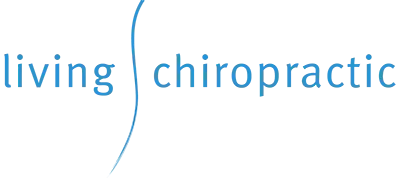Ankle Injuries & Chronic Instability
“My ankle rolls easily or aches after long walks…”
Understanding Ankle Sprains & Strains
"My ankle rolls easily or aches after long walks…"
Ankle sprains are one of the most common injuries seen in practice. They occur when ligaments—strong bands of connective tissue that support the joint—are overstretched or torn. This often results from a sudden inward twist or landing awkwardly on uneven ground.
Severity can vary from minor discomfort to significant pain, swelling, and even a distinct “pop” at the time of injury. Even seemingly minor sprains that are not properly rehabilitated may result in long-term instability or weakness.
Common contributors include old injuries, uneven leg length, spinal misalignment, and altered gait mechanics.
How Chiropractic Care Can Help
At Living Chiropractic, we assess the entire biomechanical chain—from the feet to the spine—because injuries often create ripple effects in the body. Our approach includes:
Gonstead chiropractic adjustments to restore proper ankle and foot alignment
Neurological stimulation to improve proprioception and balance
Assessing related joints (hip, knee, spine) to address compensatory stress
Restoring joint integrity enhances nerve feedback, helping your brain better understand joint position and movement. This helps coordinate muscle control, reduce reinjury risk, and support long-term recovery. Myotherapy and remedial massage may be used alongside chiropractic to release soft tissue tightness and improve healing outcomes.
The Risks of Not Treating It
Left untreated, ankle sprains can lead to chronic joint instability, reduced flexibility, recurring injuries, or early degenerative changes. This may affect your walking pattern and contribute to problems in your knees, hips, or spine over time.
“The most common predisposition to suffering a sprain is the history of having suffered a previous ankle sprain.” — Hertel, J. (2002)

What the Research Says
A 2009 pilot study found that chiropractic adjustments improved hip extension and running speed in athletes. This highlights how improving joint alignment can affect overall function and performance.
Reference: Killinger, L., & Perle, S. M. (2009). Effects of lumbar spine and sacroiliac adjustments on hip extension and running velocity in asymptomatic athletes: A pilot study. Journal of Chiropractic Medicine, 8(4), 155–160. https://doi.org/10.1016/j.jcm.2009.06.002
Knee Pain & Injury Recovery
"My knee aches, clicks, or feels unstable when I move…"
Understanding Knee Pain
Knee issues can result from trauma, overuse, or poor joint alignment. Common conditions we see include:
Patellofemoral syndrome
Meniscus irritation
Ligament strain or post-operative stiffness
Repetitive strain due to ankle or hip dysfunction
Misalignment in surrounding joints often shifts mechanical pressure into the knee, causing it to bear strain it isn’t designed for.
What the Research Says
A randomised trial comparing manual therapy and supervised exercise to home exercise alone found significantly better results for those receiving hands-on care.
Reference: Deyle, G. D., et al. (2005). Physical therapy treatment effectiveness for osteoarthritis of the knee: A randomised comparison of supervised clinical exercise and manual therapy procedures versus a home exercise program. Physical Therapy, 85(12), 1301–1317. https://doi.org/10.1093/ptj/85.12.1301
Chiropractic's Role in Knee Recovery
At Living Chiropractic, we perform a full-body assessment to understand how your knee is functioning in relation to your spine and pelvis. Our treatments may involve:
Adjustments to the lumbar spine, pelvis, or foot to improve knee biomechanics
Chiropractic techniques to stimulate nerve supply to surrounding muscles
Enhancing proprioception and motor control through neurological integration
This comprehensive approach helps the knee move more naturally, reduces inflammation, and supports muscular re-education.
Hip Pain & Stability Issues
"My hip feels tight, painful, or like it’s catching when I move…"
Understanding Hip Dysfunction
The hips bear your body weight and allow you to walk, run, and rotate your body. Symptoms such as groin pain, outer hip tightness, or “catching” sensations can indicate joint imbalance or compensatory strain from other parts of the body.
Common contributors include old injuries, uneven leg length, spinal misalignment, and altered gait mechanics.
How Chiropractic Care Helps
We take a full-body approach to hip pain by:
Analysing movement from your feet to your lower back
Using the Gonstead method to realign the pelvis and sacroiliac joints
Enhancing neurological input to the stabilising muscles around the hip
Adjusting these regions can improve joint mobility, correct gait abnormalities, and reduce compensation patterns throughout the body. We may also work with our myotherapists to improve soft tissue function and support active rehabilitation.

What the Research Says
A 2009 pilot study found that chiropractic adjustments improved hip extension and running speed in athletes. This highlights how improving joint alignment can affect overall function and performance.
Reference: Killinger, L., & Perle, S. M. (2009). Effects of lumbar spine and sacroiliac adjustments on hip extension and running velocity in asymptomatic athletes: A pilot study. Journal of Chiropractic Medicine, 8(4), 155–160. https://doi.org/10.1016/j.jcm.2009.06.002
Ready to move better and feel stronger?
Book an appointment with Living Chiropractic today and take the first step toward lasting relief from ankle, knee, or hip pain. Our team will assess your movement, tailor your care, and support your recovery—without relying on drugs or quick fixes.
📍 Serving Chelsea Heights, Bonbeach, Patterson Lakes, Carrum & surrounding areas
📞 Call us today: 03 9580 2282
